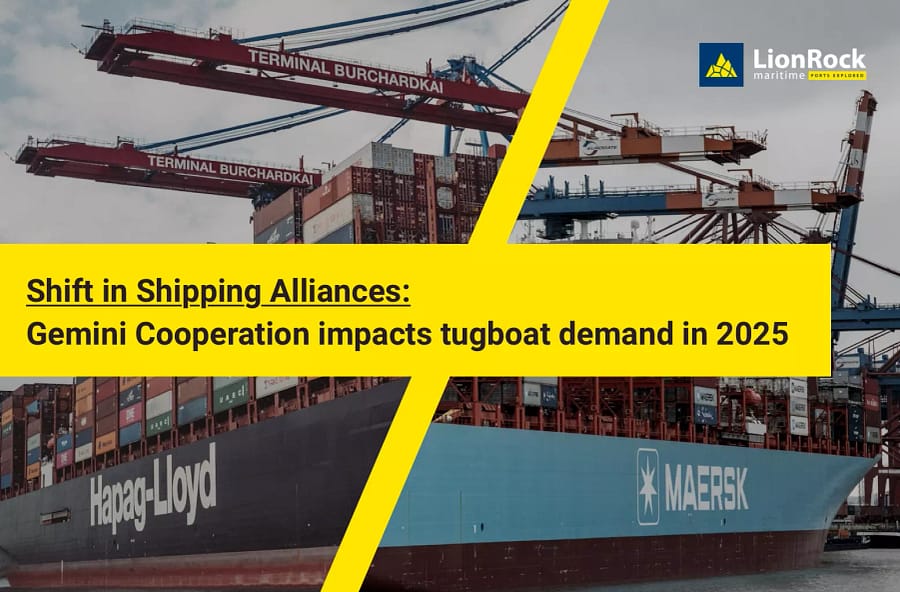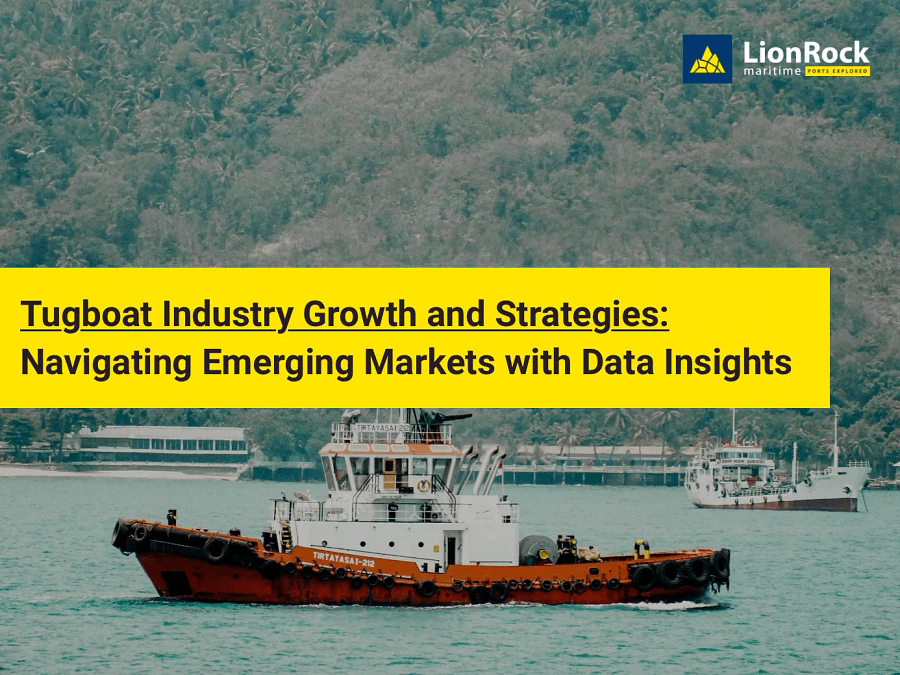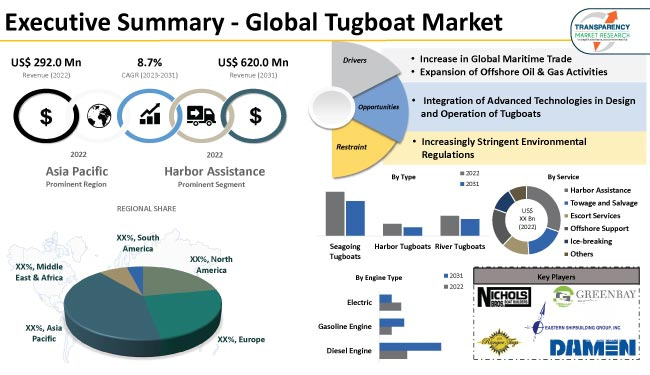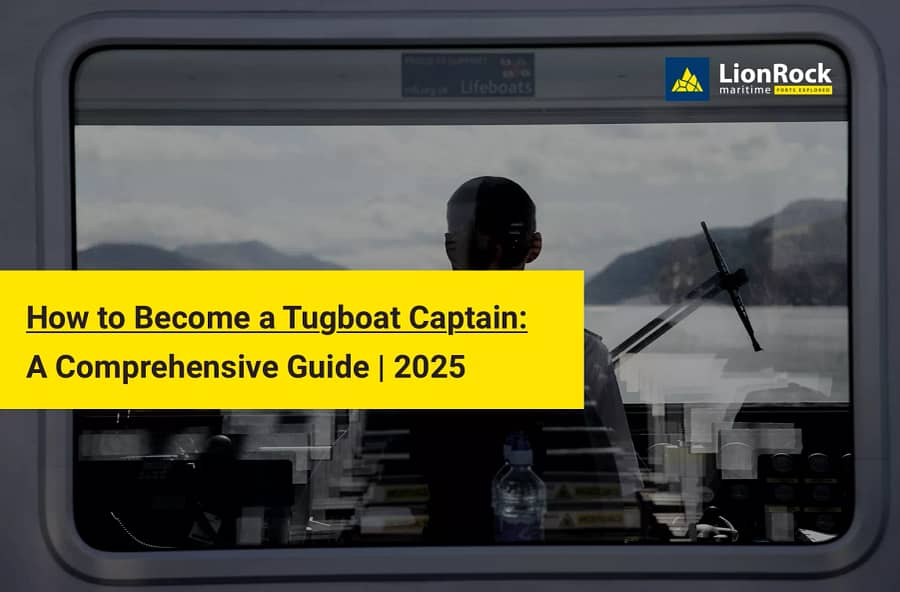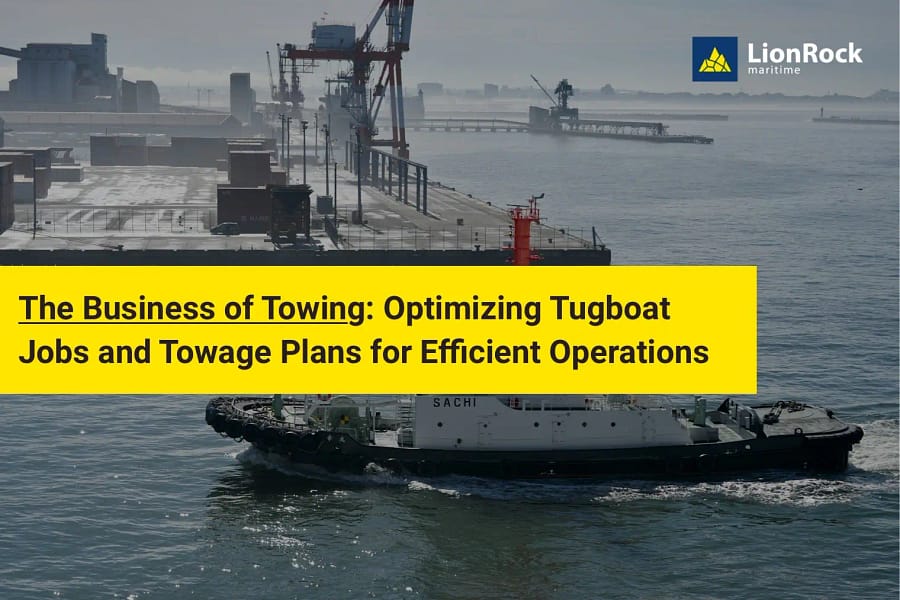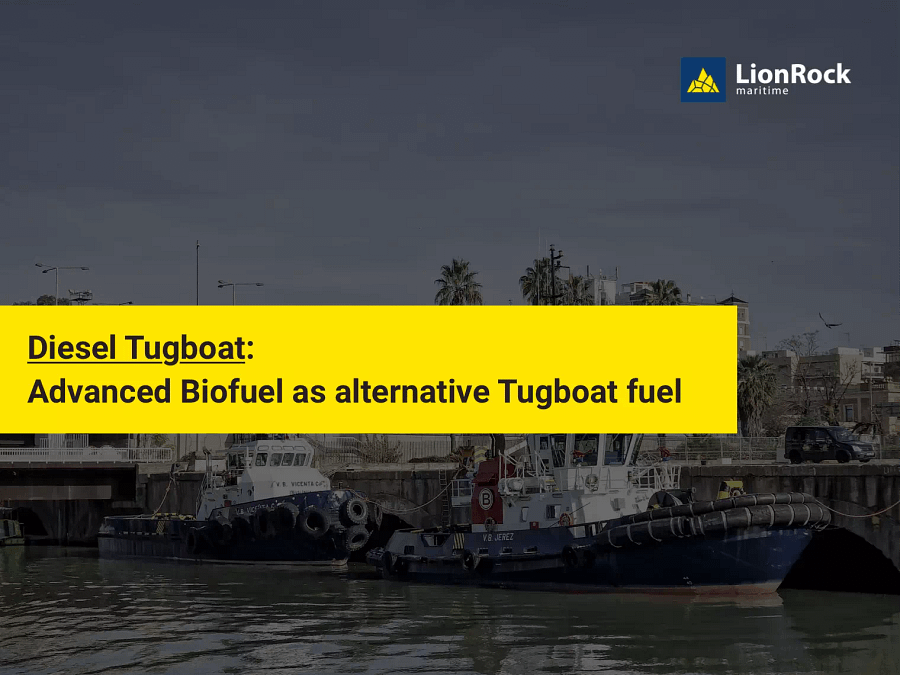Shipping Alliances: Gemini Cooperation shifts tugboat demand in 2025
How Shipping Alliance Restructuring and Market Insights Shape Tugboat Demand and Fleet Optimization
Shipping Alliances: Gemini Cooperation shifts tugboat demand in 2025
Global shipping alliances are undergoing transformative changes, reshaping container shipping networks and tugboat operations worldwide. This article explores how alliance restructuring impacts tugboat demand, highlights fleet optimization strategies, and provides actionable insights for towage operators to adapt to a rapidly changing maritime landscape.

Introduction – Change Within Shipping Alliances and Its Impact
The container shipping network is undergoing a transformation due to significant changes in global shipping alliances, such as the dissolution of the 2M Alliance between Maersk and MSC, and the establishment of the Gemini Cooperation between Maersk and Hapag-Lloyd. These shifts are reshaping vessel deployment strategies, port call patterns, and ultimately, the demand for tugboat operations in ports across the globe. In this article, we shall also explore the expected impact on tug demand in the port of Rotterdam.
The Impact of Shipping Alliance Restructuring on Tug Job Volume
The reorganization of global shipping alliances has introduced significant changes to container shipping networks globally. The dissolution of the 2M Alliance and the formation of the Gemini Cooperation will both reshape vessel schedules and port call frequencies. These shifts have a direct impact on tugboat demand at major European ports, requiring operators to adapt to the changing dynamics of vessel traffic and port operations.
As large container ships are redeployed or rerouted within these new shipping alliances, the frequency and size of vessel calls can fluctuate, leading to unpredictable spikes or drops in tug operations. Moreover, towage operators are expected to face increased resource and cost pressures, requiring flexible strategies to maintain service quality while managing operational expenses. In 2025, ports like Rotterdam and Bremen are expected to see an increase in tug jobs as shipping lines increase the number of port calls there. In contrast, other ports could experience reduced tug operations as shipping alliances refine their network efficiency, or experience a more stable situation, as it is expected for Antwerp. To adapt to these changes, towage companies should stay informed about evolving network patterns, proactively anticipating their impact on port activity.
Expected impact on the Port of Rotterdam
An analysis of vessel activity on the eeSea platform (www.eesea.com) in the Port of Rotterdam reveals intriguing trends in operational costs over time, providing valuable insights for towage operators and port stakeholders. From March onward, forecasts indicate an increase in vessel arrivals to Rotterdam, driven by shifting trade patterns and changes in shipping alliance networks.
A closer look at vessel data highlights color-coded classifications that distinguish between major and minor container lines, allowing operators to identify trends tied to specific carriers. The dataset also includes a “null category” for vessels where operator details are yet to be confirmed, reflecting the dynamic nature of maritime logistics. These insights are essential for refining tug allocation strategies, ensuring resources are efficiently deployed to meet the anticipated surge in activity while accounting for operator-specific requirements.

What Does the Increase Mean for Operators?
When a shipping network changes, it brings a cascade of variables that directly impact tugboat operations, requiring operators to adjust their resources strategically. Among these variables, the number of vessel calls is the most immediate determinant of tug job volume, as an increase in ship arrivals typically translates to higher tug demand. However, other factors complicate the equation, including vessel size, terminal assignments, vessel operator, and arrival and departure windows.
Larger vessels, such as ultra-large container ships, require more powerful tugs or multiple tugs to ensure safe maneuvering. The duration of tug jobs may also increase for these vessels, further influencing capacity requirements. Terminal assignments introduce additional considerations, as certain terminals may pose greater maneuverability challenges or require specific tug capabilities, such as higher bollard pull or specialized propulsion types. For instance, some terminals in Rotterdam are known for their unique configurations, requiring tugs with particular operational characteristics to navigate effectively.
The carrier operating the vessels also plays a role, as towage companies often have contractual arrangements with specific shipping lines. Changes in network configurations may shift volumes among carriers, potentially impacting the distribution of jobs among tug operators. Additionally, arrival and departure windows affect the simultaneity of jobs. Ports like Rotterdam, which handle multiple large vessels at once, may see surges in demand during peak periods, requiring precise planning to prevent bottlenecks.
Operators must consider all these variables to translate network changes into actionable tug capacity planning. For example, a 20% increase in vessel volume does not necessarily mean a proportional increase in job numbers or tug requirements. Instead, operators must analyze how the timing and nature of these jobs will evolve, as well as whether existing resources can handle simultaneous demands.
By using predictive analytics and real-time data, towage companies can forecast these shifts more accurately, aligning their fleet capacities to meet the nuanced requirements of the evolving shipping landscape. Real-life examples, such as shifts in alliances that redirect larger vessels to Rotterdam’s busiest terminals, demonstrate the importance of adaptable strategies. With careful planning and robust market insights, operators can navigate these changes while maintaining service quality and controlling costs.
Download full report of predictive analysis for 2025 of major ports in Europe
Leveraging Market Insights to Optimize Tug Operations
Faced with the challenges of fluctuating tugboat demand, towage operators can embrace precise, data-driven strategies to optimize their fleet operations. LionRock Maritime, in partnership with eeSea—a leading container shipping market data provider—delivers powerful insights to support these decisions. By combining eeSea’s expertise in analyzing vessel schedules, sizes, and operator patterns with LionRock’s advanced tools, operators can effectively assess how these factors influence tug capacity requirements. This partnership empowers operators to identify emerging trends, ensure optimal resource deployment, and maintain seamless operations in a rapidly evolving maritime landscape.
Conclusion – Preparing for the Future of Towage Services
The restructuring of shipping alliances (the dissolution of 2M Alliance and the formation of Gemini Cooperation) presents both challenges and opportunities for tugboat operators. Adapting to these shifts demands strategic planning and reliance on advanced market insights.
By forecasting demand, optimizing fleet allocation, and enhancing operational efficiency, companies can maintain a competitive edge in a rapidly changing maritime industry.
As the shipping landscape continues to evolve, towage operators must place a strong emphasis on flexibility and innovation. The restructuring of shipping alliances and changing market dynamics require operators to adapt quickly and efficiently. By leveraging advanced analytics and fostering strategic partnerships, operators can gain valuable insights into shifting vessel networks and port activity. This proactive approach enables them to better anticipate demand fluctuations, optimize fleet resources, and adjust operations accordingly. Embracing these strategies will not only help ensure operational efficiency, but also position towage companies for long-term profitability in an increasingly complex maritime environment.
Adapting Tugboat Operations to Shipping Alliance Restructures and Market Trends
Enhance your tugboat fleet optimization by partnering with us today. Together, we can help you navigate the evolving maritime landscape and ensure your operations remain efficient and responsive to change. LionRock Maritime, in collaboration with industry experts eeSea, provides powerful tools to optimize tugboat operations and align your fleet with the latest market trends. Gain insights into vessel schedules, port call patterns, and tug demand to reduce costs and improve efficiency. Take your tugboat fleet optimization to the next level — partner with us today and ensure your operations thrive in the changing maritime landscape.
FAQ: Shipping Alliances Shift
How do changes in shipping alliances affect towage operators?
Restructures in shipping alliances, like the dissolution of the 2M Alliance and the formation of Gemini Cooperation, lead to shifts in vessel schedules, port call patterns, and container traffic distribution. For towage operators, this translates to fluctuating demand for tug services, necessitating efficient resource allocation and proactive adjustments to meet evolving operational needs.
What impact will the Gemini Cooperation have on the Port of Rotterdam?
The Port of Rotterdam is expected to see increased vessel activity due to the Gemini Cooperation between Maersk and Hapag-Lloyd. This partnership may bring larger ships and consolidated cargo volumes to Rotterdam’s terminals, requiring towage operators to handle more complex operations. Anticipating these changes and aligning tug resources with new demand patterns will be critical for ensuring smooth port operations.
What operational adjustments are needed following the dissolution of the 2M Alliance?
The end of the 2M Alliance disrupts established routes and vessel-sharing agreements between Maersk and MSC, leading to a reorganization of shipping networks. Towage operators must adapt to changes in vessel call frequencies and terminal preferences, which may cause uneven demand. Using predictive tools and data-driven strategies will help operators allocate tugs effectively and maintain service quality during this transition.
How can towage operators align their resources with shifting vessel and terminal demands in ports like Rotterdam?
To adapt to changes in vessel size, terminal assignments, and operator schedules, towage operators must analyze multiple variables, including the number and timing of vessel calls and the specific requirements of ultra-large container ships. Tools like LionRock Maritime’s Tug Capacity Tool help operators assess how evolving network patterns affect tug demand, enabling dynamic adjustments to fleet allocation and ensuring smooth port operations without overextending resources.
References for shipping alliances
https://app.eesea.com/news/gemini-cooperations-2025-voyages-unearthed
https://www.eesea.com/solutions
https://www.maersk.com/network-of-the-future
https://www.maersk.com/news/articles/2023/01/25/maersk-and-msc-to-discontinue-2m-alliance-in-2025
Image References
Photo by Wolfgang Weiser found on Unsplash
Photo by hoch3fotografie found on Unsplash


